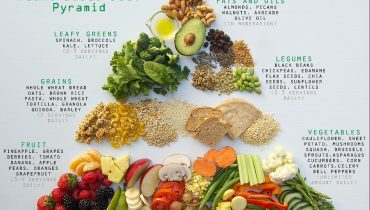In today’s health-conscious society, calorie counting has emerged as a popular and effective strategy for weight management. Whether your goal is to lose weight, gain muscle, or maintain your current physique, understanding how to count calories can be a game-changer. This article will explore the basics of calorie counting, its benefits, how to get started, and tips for making it a sustainable part of your lifestyle.
Understanding Calories
Calories are units of energy that our bodies use to perform daily functions, from basic metabolic processes to physical activities. The number of calories you need each day depends on various factors, including age, sex, weight, height, and activity level. Consuming more calories than your body needs leads to weight gain, while consuming fewer calories leads to weight loss.
Benefits of Calorie Counting
Weight Management: Calorie counting helps create a calorie deficit (burning more calories than consumed) for weight loss or a calorie surplus (consuming more calories than burned) for weight gain.
Awareness: It increases awareness of food choices and portion sizes, helping you make more informed decisions about what you eat.
Control: Provides a sense of control over your diet and can help identify patterns that may be hindering your progress.
Balance: Encourages a balanced diet by highlighting the nutritional content of different foods, leading to healthier eating habits.

Getting Started with Calorie Counting
Step 1: Determine Your Caloric Needs
To get started, calculate your Total Daily Energy Expenditure (TDEE), which is the total number of calories you need to maintain your current weight. You can use online calculators that take into account your age, sex, weight, height, and activity level.
Step 2: Set Your Goals
Based on your TDEE, set a daily calorie target that aligns with your goals. For weight loss, aim for a moderate calorie deficit (typically 500 calories less than your TDEE). For weight gain, aim for a slight calorie surplus.
Step 3: Track Your Intake
Use a food diary or a calorie counting app like MyFitnessPal, Lose It!, or Cronometer to log everything you eat and drink. These apps provide extensive food databases and can scan barcodes to simplify the tracking process.
Tips for Effective Calorie Counting
Be Honest and Accurate: Measure portions carefully and be honest about your food intake. Overestimating portions or forgetting to log snacks can skew your results.
Read Labels: Learn to read nutrition labels to understand the calorie content and serving sizes of packaged foods.
Prepare Your Own Meals: Cooking at home gives you control over ingredients and portion sizes, making it easier to track calories.
Stay Hydrated: Drink plenty of water throughout the day. Sometimes, thirst can be mistaken for hunger, leading to unnecessary snacking.
Plan Ahead: Plan your meals and snacks in advance to avoid impulsive eating and to ensure you stay within your calorie target.
Include All Foods: Don’t forget to log condiments, dressings, and beverages, as these can add significant calories.
Be Patient: Weight management is a gradual process. Avoid extreme calorie deficits or surpluses, which can be unsustainable and unhealthy.
Common Challenges and Solutions
Challenge: Inconsistency in Tracking
Solution: Set reminders to log your meals, and try to enter food items immediately after consumption to avoid forgetting.
Challenge: Eating Out
Solution: Choose restaurants that provide nutritional information. When in doubt, estimate portions and choose healthier options, such as grilled instead of fried foods, and salads with dressing on the side.
Challenge: Social Situations
Solution: Plan ahead for social events by saving calories earlier in the day or incorporating more physical activity. Don’t stress over occasional indulgences; balance is key.
Calorie Counting and Nutrition
While calorie counting focuses on the quantity of food, it’s equally important to consider the quality. Aim for a balanced diet rich in whole foods, including:
Proteins: Essential for muscle repair and growth. Include lean meats, fish, eggs, beans, and legumes.
Carbohydrates: Provide energy. Opt for complex carbs like whole grains, fruits, and vegetables.
Fats: Necessary for hormone production and nutrient absorption. Choose healthy fats from nuts, seeds, avocados, and olive oil.
Vitamins and Minerals: Ensure you’re getting a variety of micronutrients by eating a diverse range of foods.
Sustainability and Long-Term Success
The key to successful calorie counting is making it a sustainable part of your lifestyle. Here are some tips for long-term success:
Flexibility: Allow flexibility in your diet. Occasional treats are okay and can prevent feelings of deprivation.
Mindful Eating: Practice mindful eating by paying attention to hunger and fullness cues, eating slowly, and savoring your food.
Support: Seek support from friends, family, or online communities. Sharing your journey can provide motivation and accountability.
Adjustments: Periodically reassess your calorie needs and goals, especially if you experience significant changes in weight, activity level, or other life circumstances.
Calorie counting is a powerful tool for managing weight and improving overall health. By understanding your caloric needs, tracking your intake accurately, and making informed food choices, you can achieve your health and fitness goals. Remember to focus not only on the quantity but also on the quality of your diet, and approach your weight management journey with patience and persistence. With these strategies, calorie counting can become a sustainable and effective part of a healthy lifestyle.


















